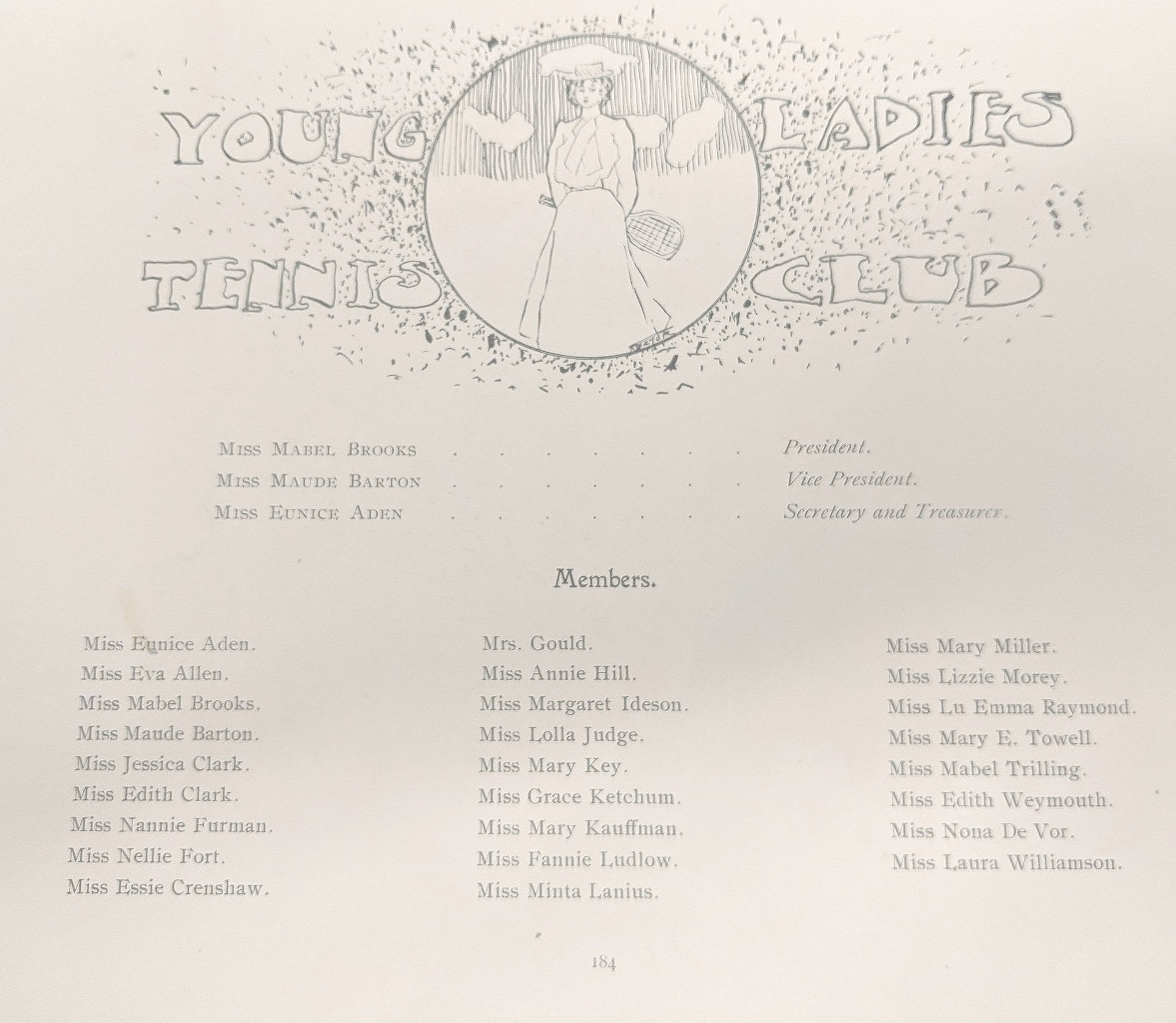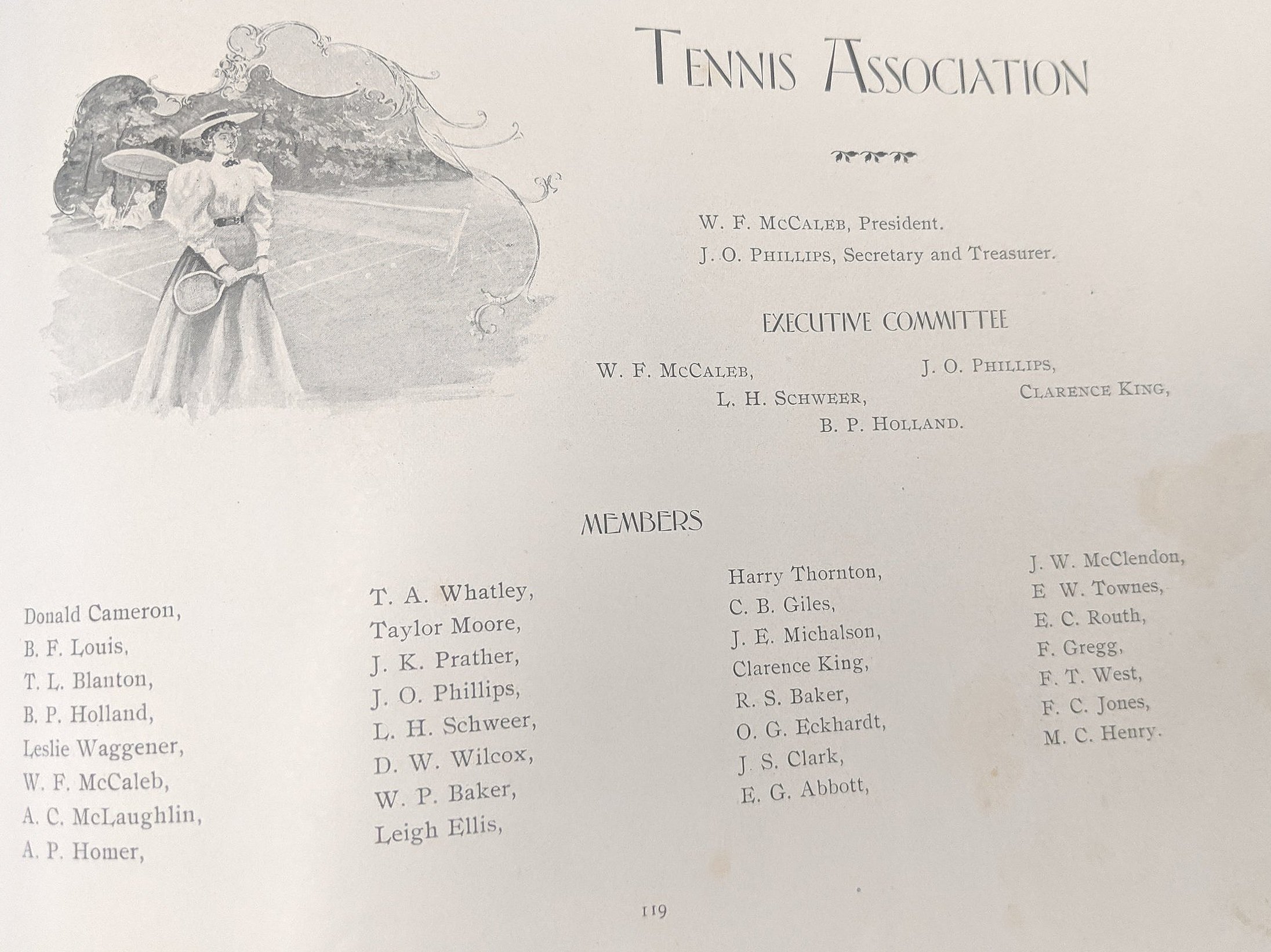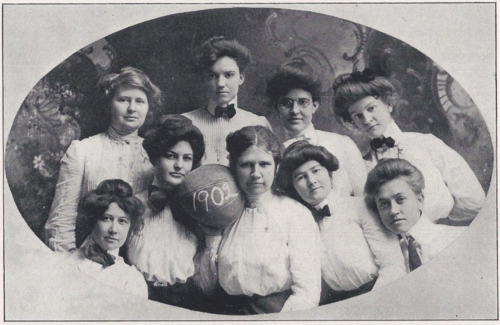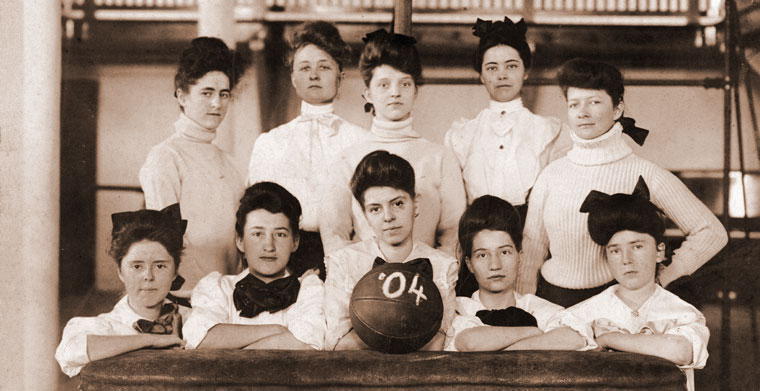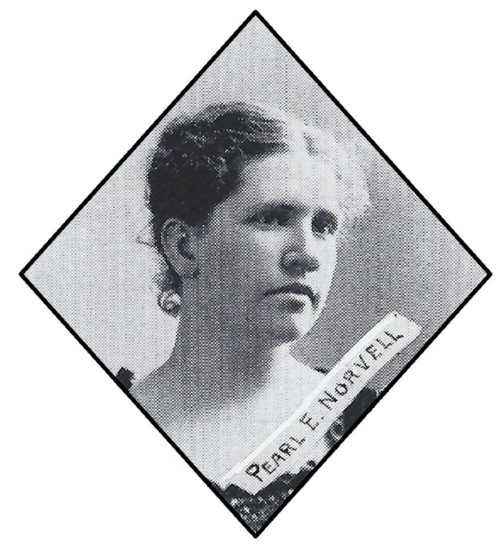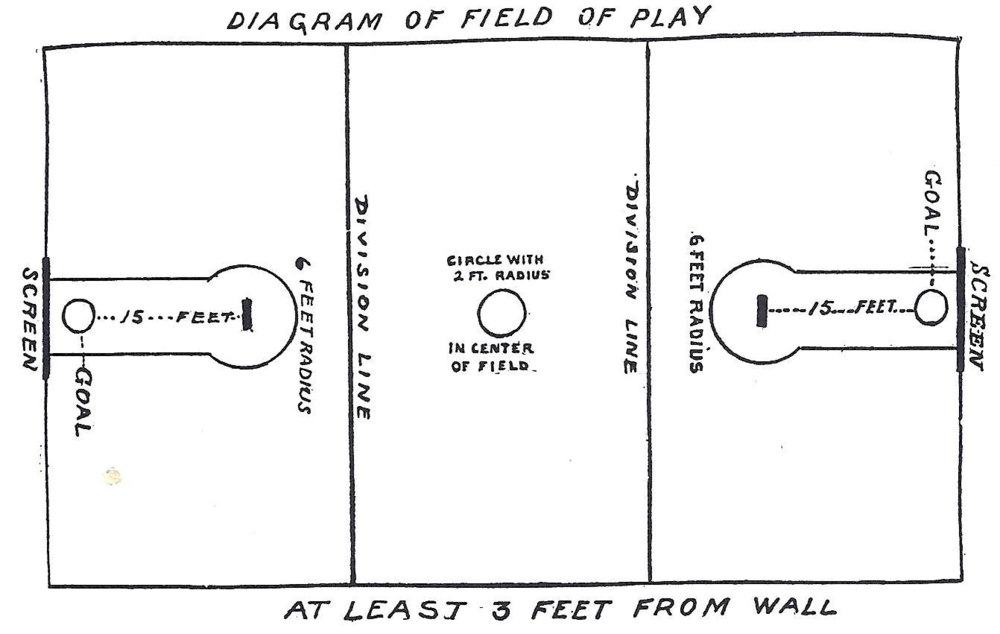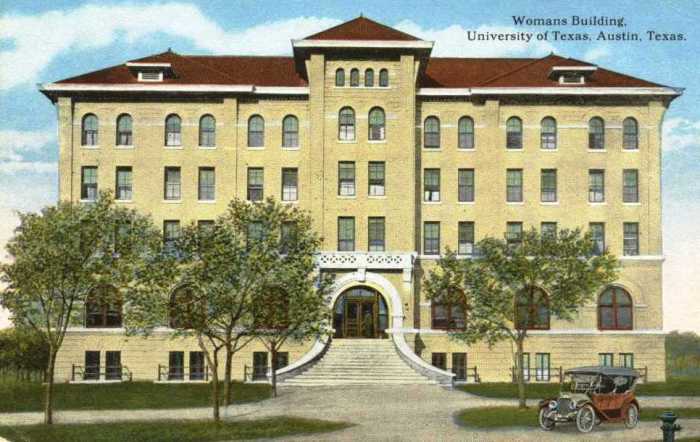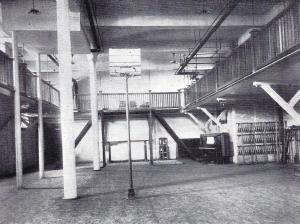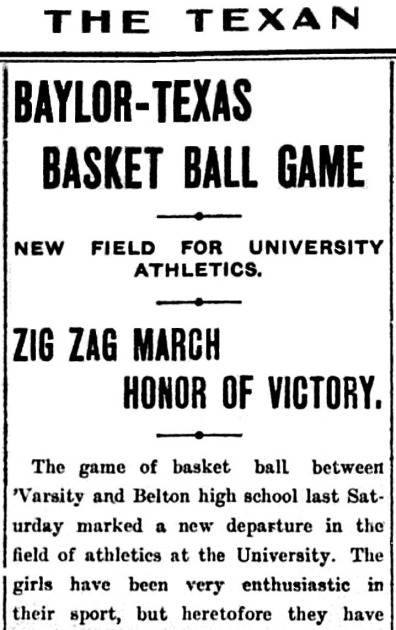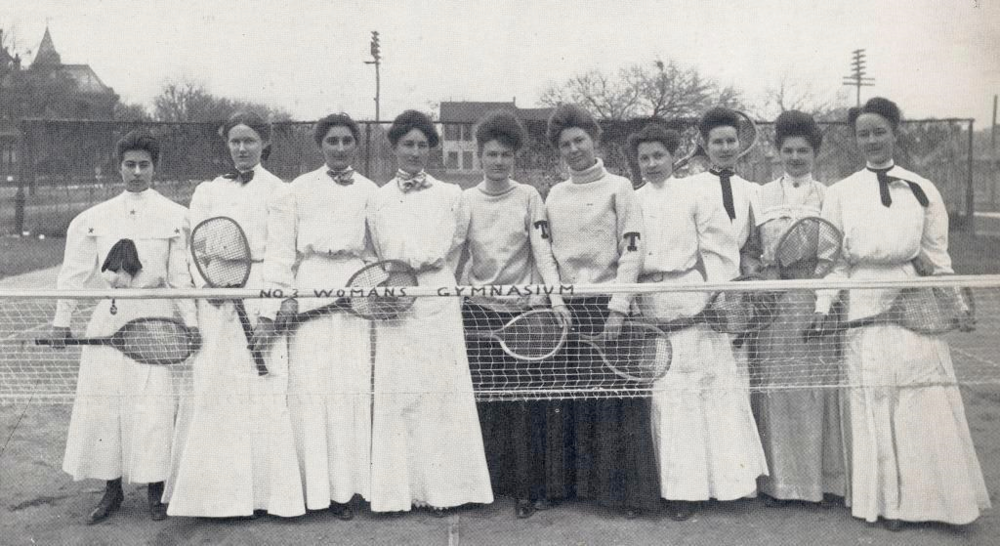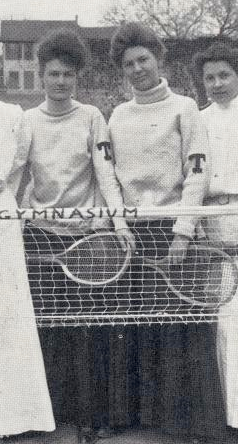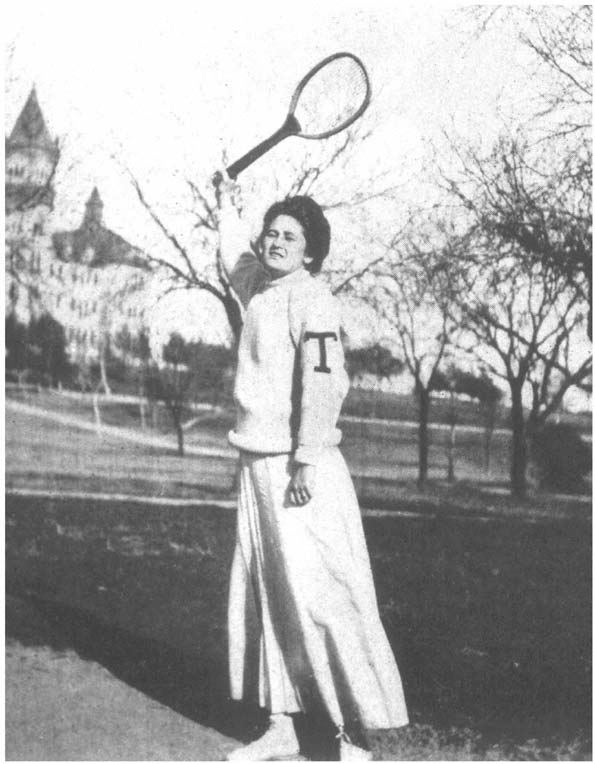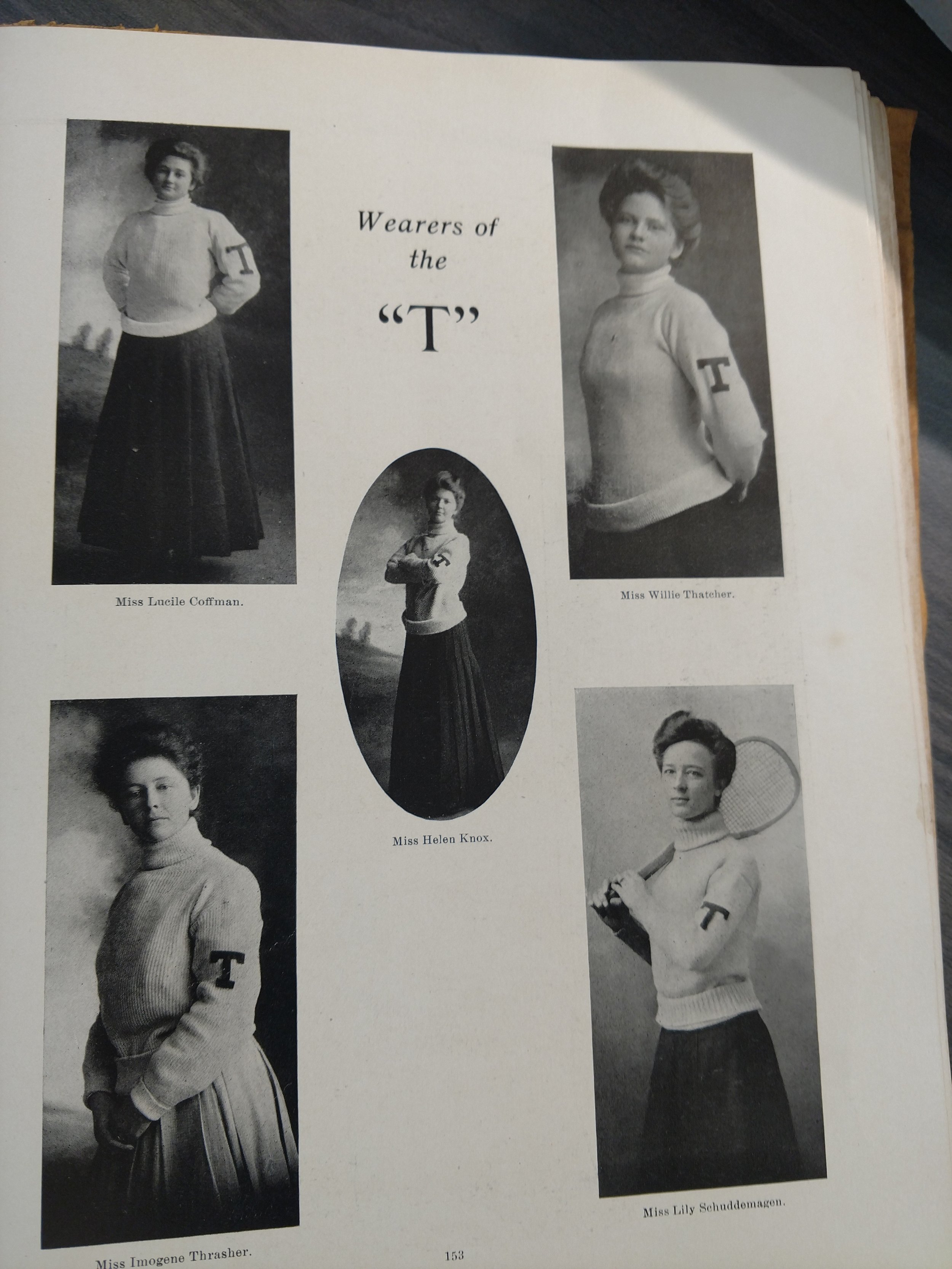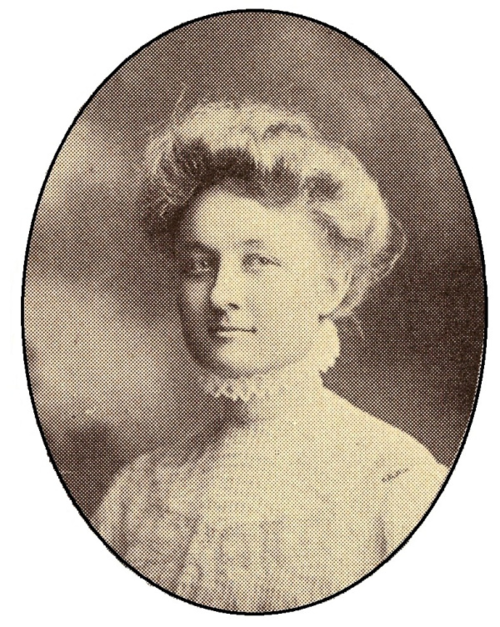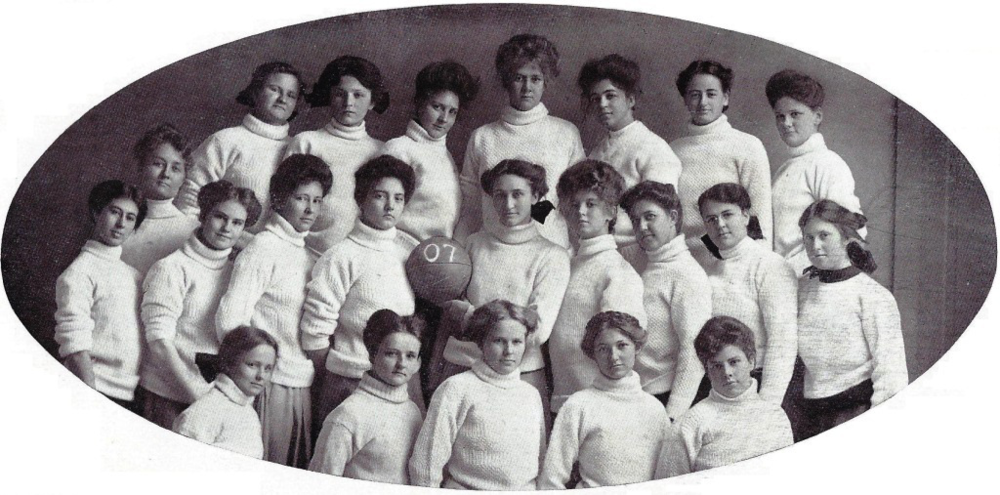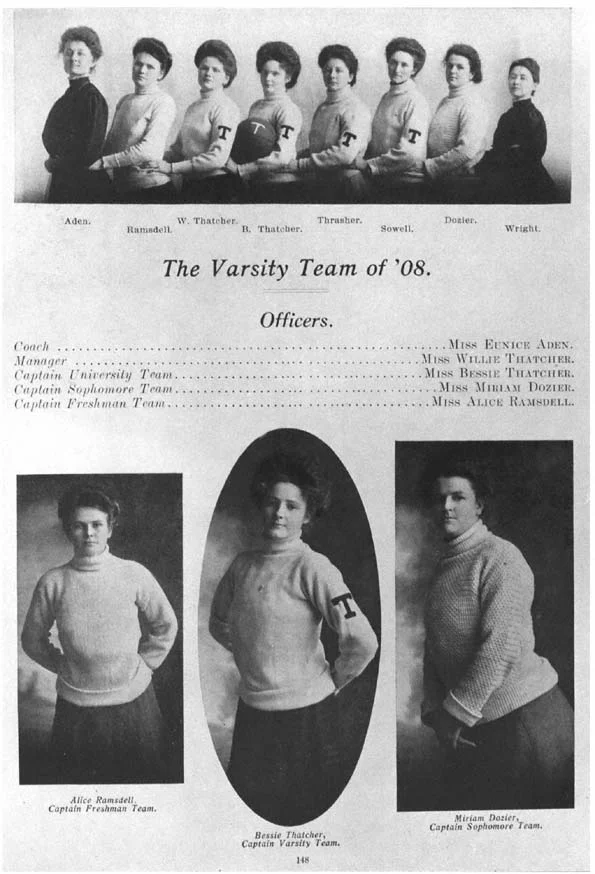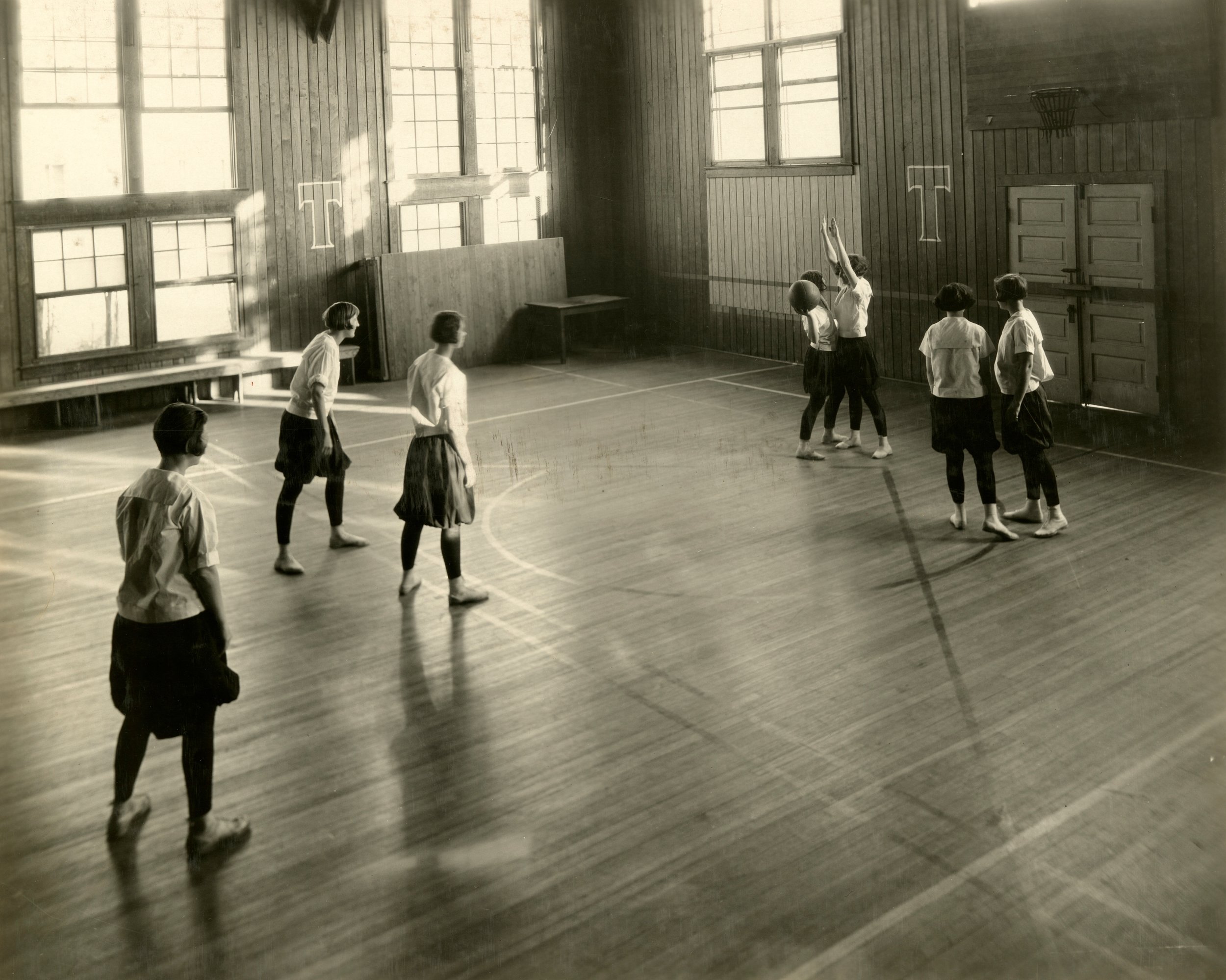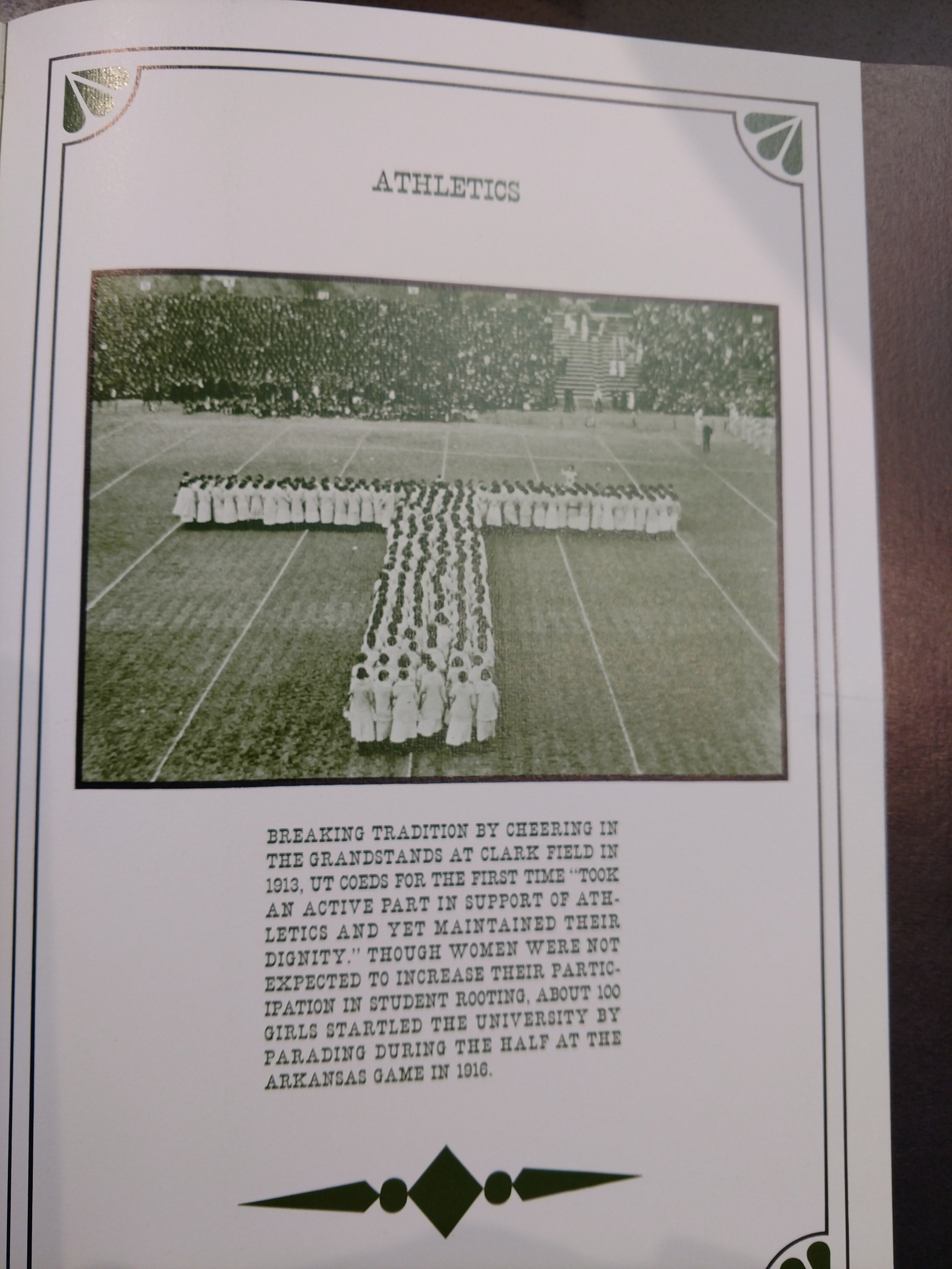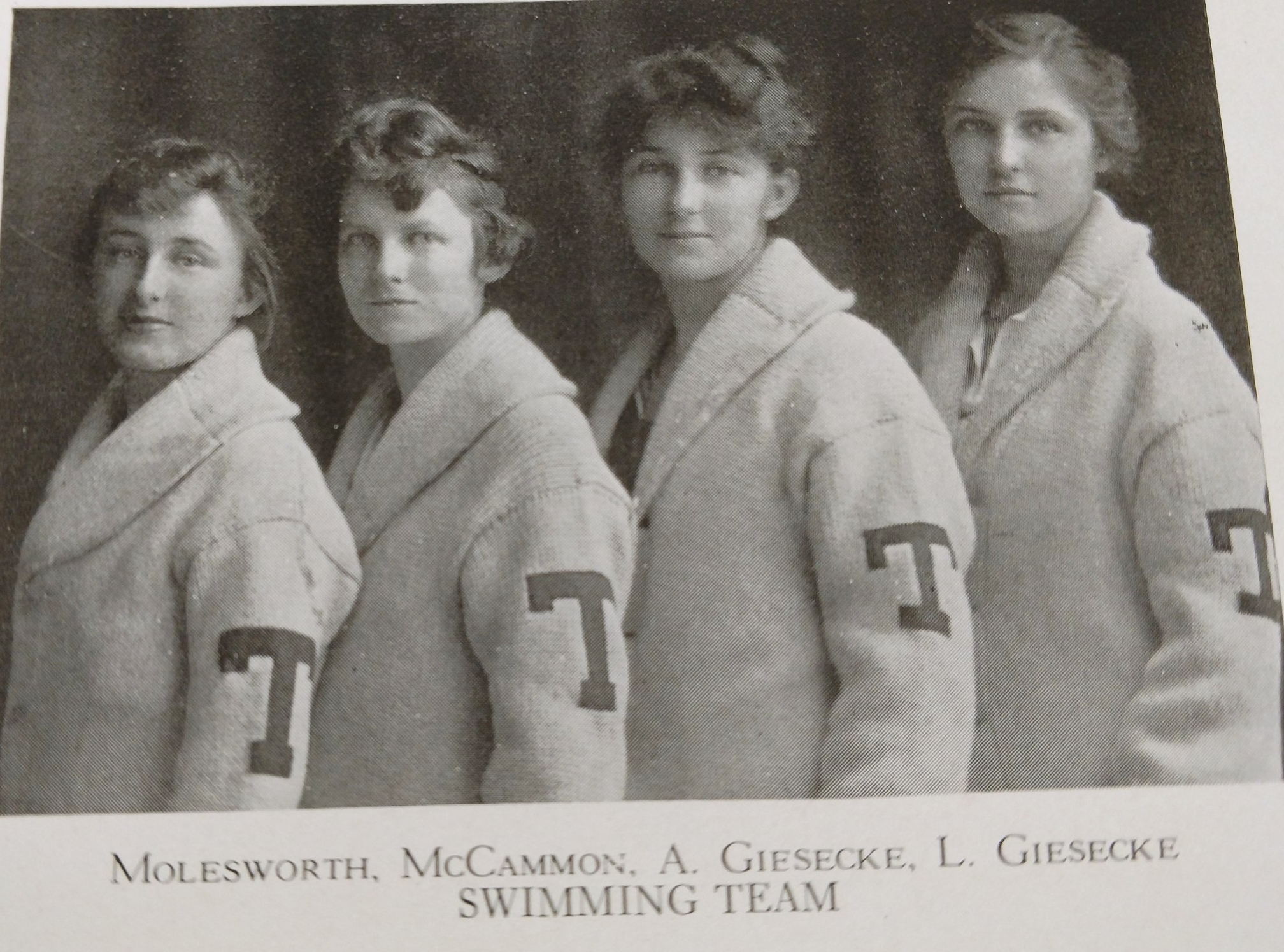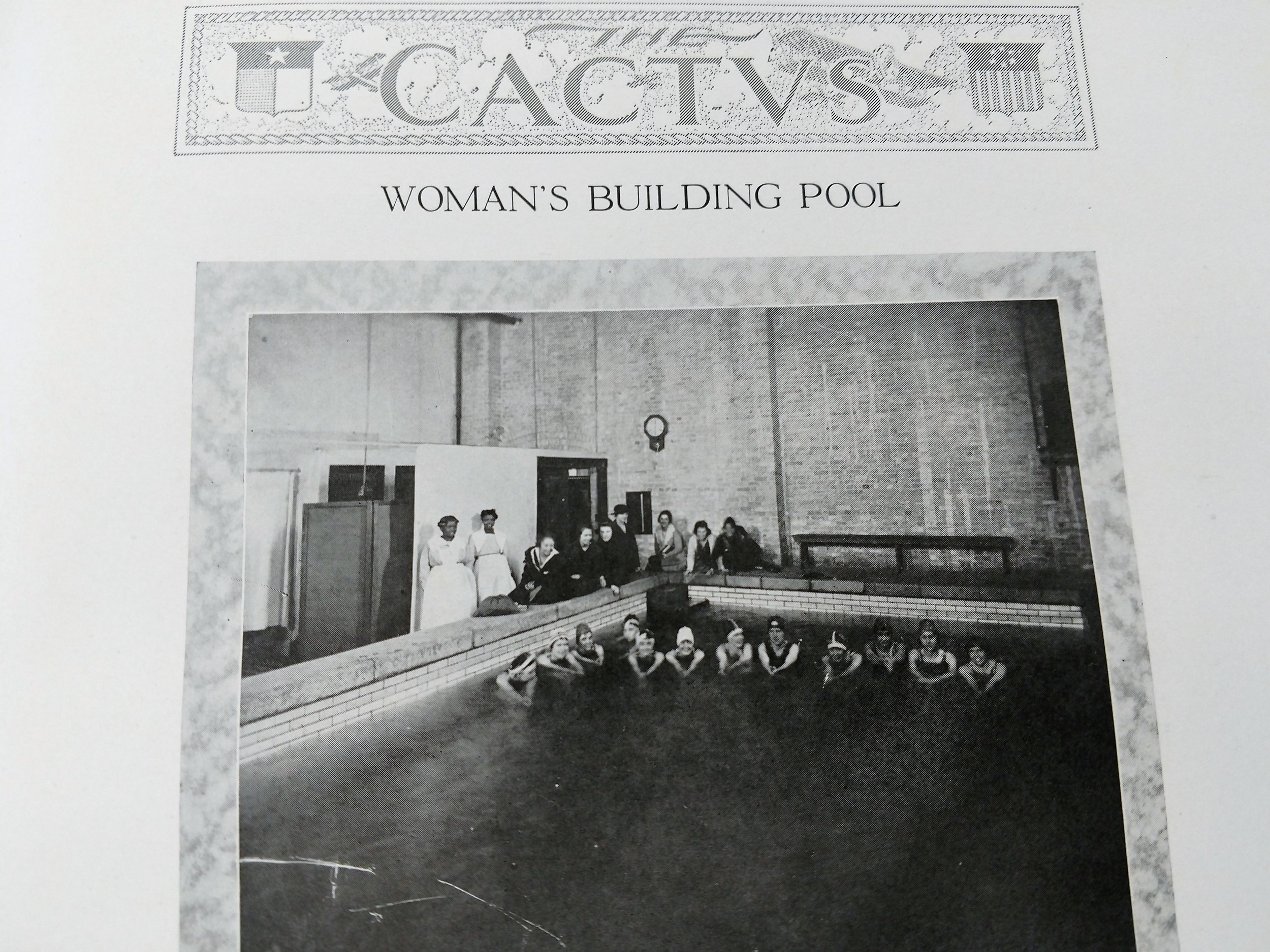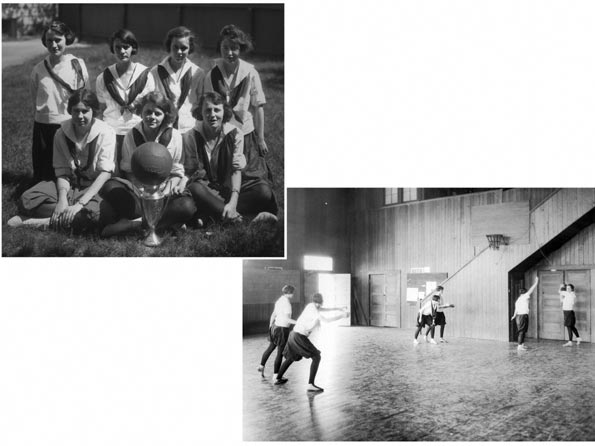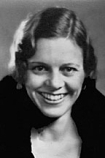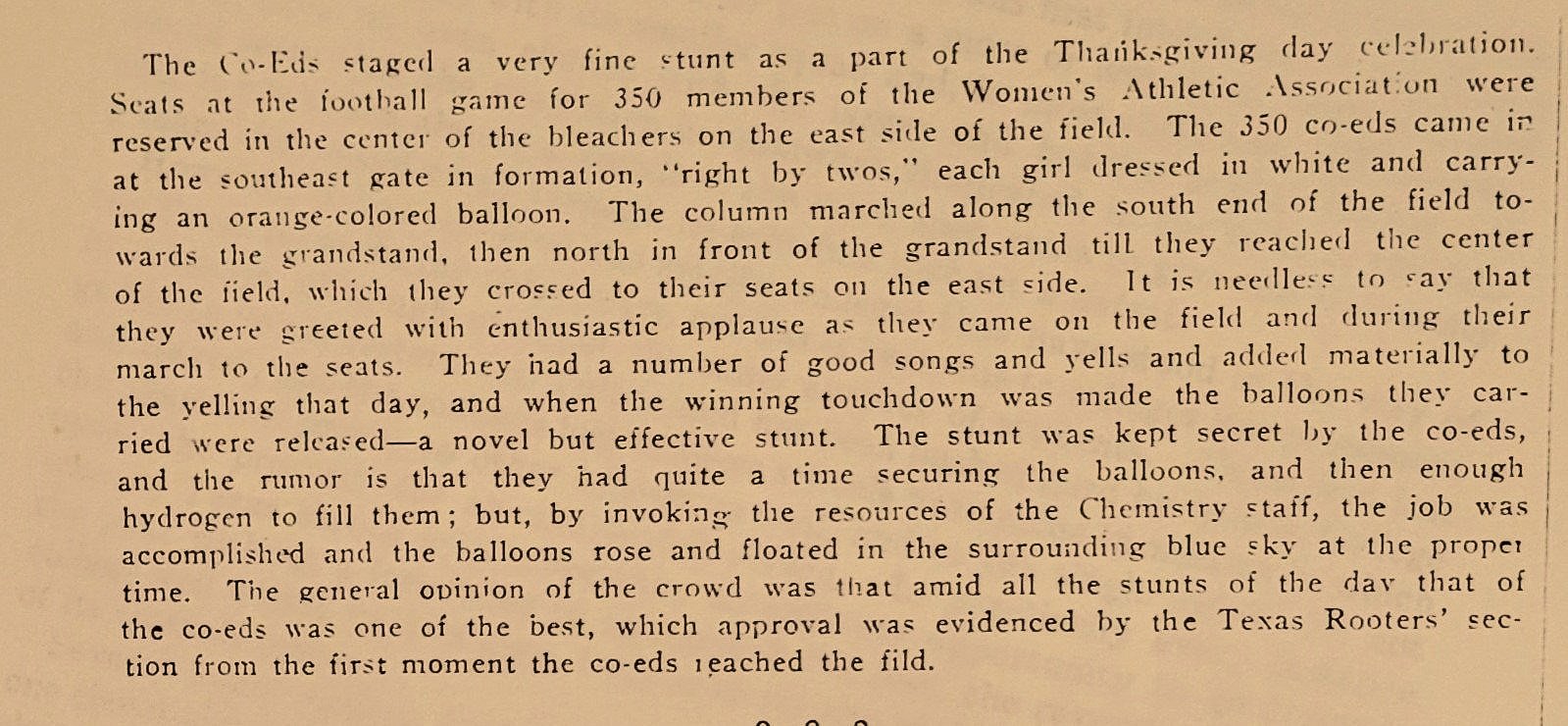Women's Sports History 1896-1921
Anna Hiss Favorite quote "A Sport for Every Girl and every girl in a sport"
Most of the research for the history of Longhorn women's sports was derived from books written about Longhorn sports including the "Cactus" which has great photos of the history of Longhorn sports. All of the books are listed in the credit section on this website.
In addition to these books there is one study and one thesis that discuss in detail the evolution of Women's sports at the University of Texas. Miriam Richards writings delivered as part of the Capstone project in 2012, and Tessa M. Nichols, B.A. thesis written in 2007 titled Organizational Values and Women's Sport at The University of Texas, 1918-1993 add much needed professional depth to the the history of women's sports at UT Austin. Tessa Nichols thesis is one of the first attempts by any individual to historically and empirically discuss the influence of the Longhorn Women's sports leaders Anna Hiss, Betty Thompson, and Donna Lopiano. Miriam Richards link and a summary page of Tessa Nichols thesis are in the credit section and their comments are incorporated into the History of Longhorn sports on the TLSN site.
This link takes you to Miriam Richards insightful work on the history of Longhorn women's basketball. The link is on the the Lutcher Stark Center web site- http://www.tiki-toki.com/timeline/entry/33089/An-Evolution-Texas-Womens-Basketball/
It is stated in a report titled "A History of Women in Sport Prior to Title IX" Submitted by Richard C. Bell, Ed.D., J.D., that prior to 1870, 's women sports were recreational rather than competitive. It was believed that each human had a fixed amount of energy. If this energy were used for physical and intellectual tasks at the same time, it could be hazardous (Park & Hult, 1993). Horseback riding for pleasure, showboating, and swimming became fashionable, but women were not encouraged to exert themselves. Such physical activity for a woman was thought to be especially hazardous during the time of the month she was “periodically weakened.” In 1874, as women were beginning to gain access to higher education, Dr. Edward Clarke published Sex in Education, or, A Fair Chance for Girls, which sparked a tenacious and acrimonious debate about the capacity of women for physical activity. He stated that “both muscular and brain labor must be reduced at the onset of menstruation” ( p. 102). Manipulating science to reinforce established dogma prevailed for many years in spite of repeated examples of women who were perfectly capable of performing physical feats and intellectual tasks. Many early opportunities for women to engage in physical activity were thwarted as a result of this dogma (Park & Hult).
1896 Stanford and Cal Berkley basketball teams compete for the first intercollegiate championship
The 1900 Summer Olympics in Paris introduces women's events, offering golf, tennis, and croquet.
The history of Women's Sports at the university of texas
1900
Pearl Norvell is Directress of gymnastics.
On January 13, 1900, Pearl Norvell organizes the First Women's basketball game at UT. Miriam Richards writings at the Stark Center state that "Ideson and Whitis coed teams played four rudimentary 10-minute quarters in the basement of the old Main Building. Whitis won by a final score of 3-2. This first game set into motion the emergence of basketball as a popular sport at UT, especially among women."
1901- Women's Basketball chooses different rules than men's basketball
In 1901 the men's basketball game was considered too rough for women, so different rules are established. The players were assigned to one of three sections (see diagram), and once a player is designated a position, she cannot move from that section. Only three dribbles per individual are allowed, and the player can only hold the ball for 3 seconds. Full court sprints or fast breaks were not part of the women's game.
These rules were implemented to reduce too much exertion, which in the early 1900’s many thought could "break something" that might hurt a player's chance of being a mother. It is thought that too much exercise "weakened" the womanly functions.
Dr. William Howard cautions, "no girl with a nervous temperament should go into any athletic contest" because sports place a strain on the nervous system.
1902-Coach Norvell
Competition for Coach Norvell's Longhorn team consist of high school teams and the Austin YMCA. Women are instructed to not seek Individual recognition for their athletic skills.
Tennis Club
Miriam Richards says that "At the end of the 1902 season, The University's chose the first "all-star" team. The team receives recognition from the Texan, Cactus, and University Record publications as the varsity squad. Pearl Norvell serves as the coach and has eight players compete against the "Town Girls." The UT all-star team wins 7-4, with observers paying a 10-cent admission fee. However, men are not allowed to watch so many peered through the windows of the gym and cheered."
Miriam Richards states "With enthusiasm for playing basketball growing, Director Aden and the Dean of Women -Helen Marr Kirby- keep a close eye on developments of basketball at UT. Basketball teams are not allowed to play off campus and several contest are cancelled due to unidentified "unfortunate incidents" in the inter-class games.
1903
In October 1903, the Woman’s Building opened as the University’s first residence hall for women. Many lawmakers were opposed to spending $50,000 on construction of a dorm for women thinking that college women needed more supervision therefore should stay with Austin families. A tie vote in the House required the Speaker to cast the deciding ballot to approve funding.
In The basement of the Woman’s Building was a gym with a pool, exercise area, dance classes, basketball, and running track.
1904
Louise Wright replaces Pearl Norvell as Director of Physical Training. She helps organize a student-run Women's Athletic Association to coordinate all UT women's sports.
She is instrumental in starting the tradition of awarding letters to Tennis players in 1904 and basketball players in 1906.
Texas women host their first out of town competition. The Texan promotes the game as a contest between Baylor and Texas ,but the game is actually against Belton High School. Texas wins 12-6.
Physical training at U.T. becomes a requirement for all women students.
Louise Wright is instrumental in starting the tradition of awarding letters to qualifying women Tennis players.
1905-1921- Eunice Aden
Eunice Aden is named named Director of Physical Training
Eunice Aden is instrumental in building an outdoor basketball court and the women's gym. She also continues to build on the tradition that recognizes players’ accomplishments with "T" sweaters and blankets.
Miriam Richards's research states that "Under the guidance of the Director of Women's Physical Education, Eunice Aden, recreational activities expanded"” Basketball teams are formed for each class (freshman, sophomore,... etc.) During this period, basketball was the only sport with an intercollegiate component, but it is still primarily an intramural and inter-class event. "T" pins, letter sweaters, and a "Texas blanket" are awarded to those students who achieve the highest levels of participation based on a point system which is considered a significant achievement for female athletes on campus."
1906
"Letters" are approved for Women's basketball
1907
The Texas women's basketball team plays Its First Intercollegiate Game Against Southwestern University On Feb. 18th, 1907. Texas Loses 19-18.
1907 basketball
1907 Tennis Club
1908
Image of the 1908 women's varsity team is from the Dolph Briscoe Center
1909 and 1910
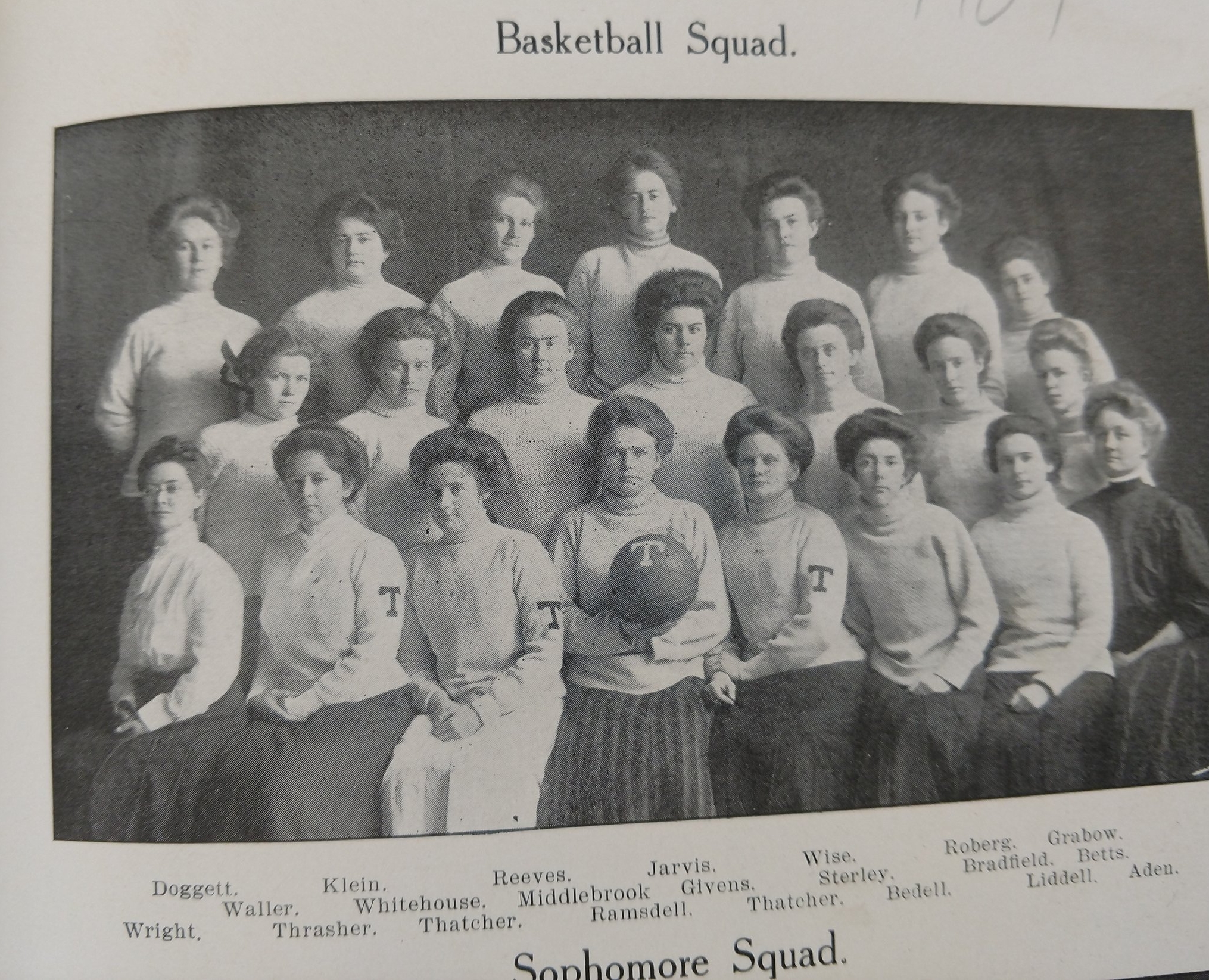

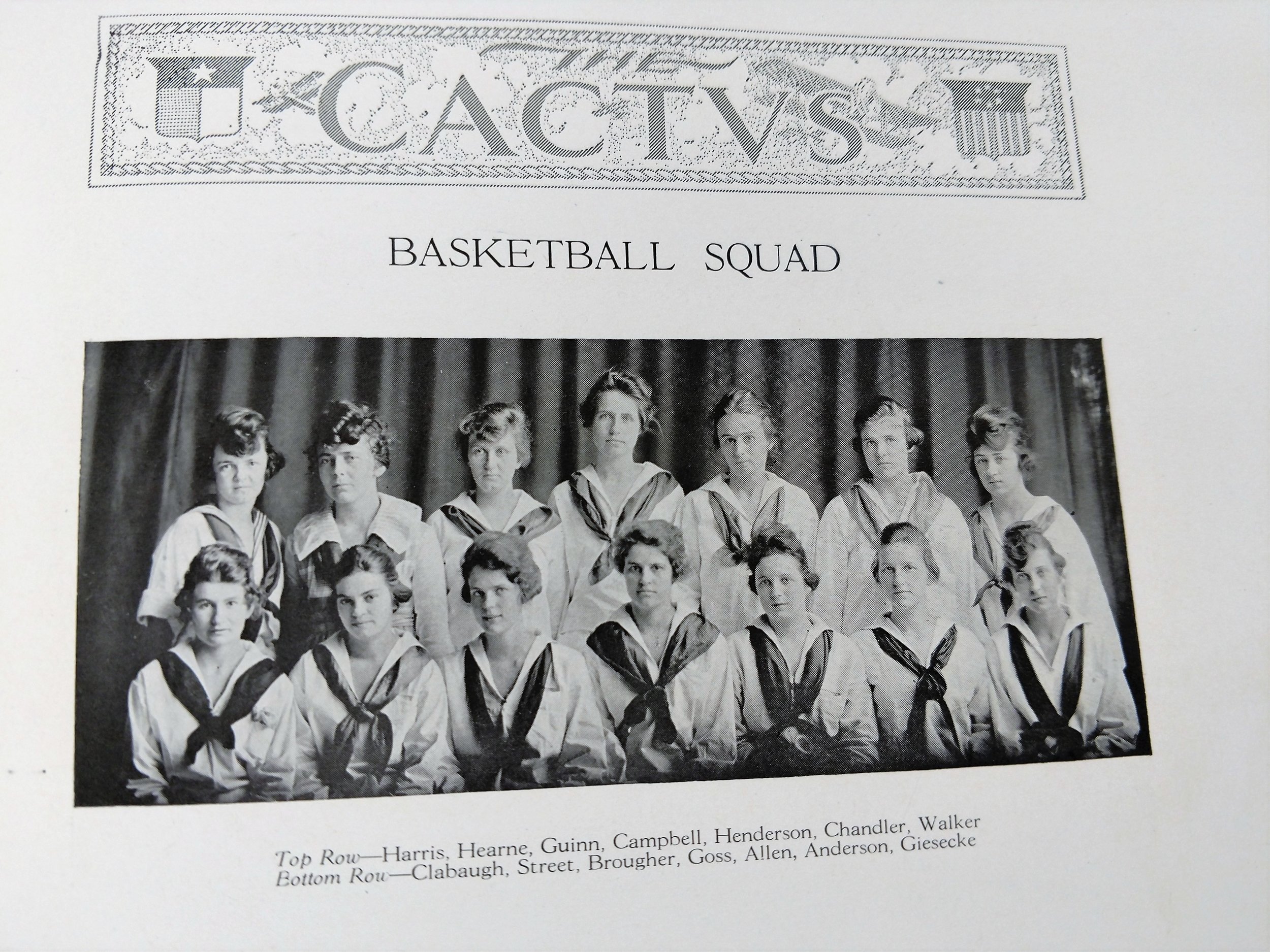
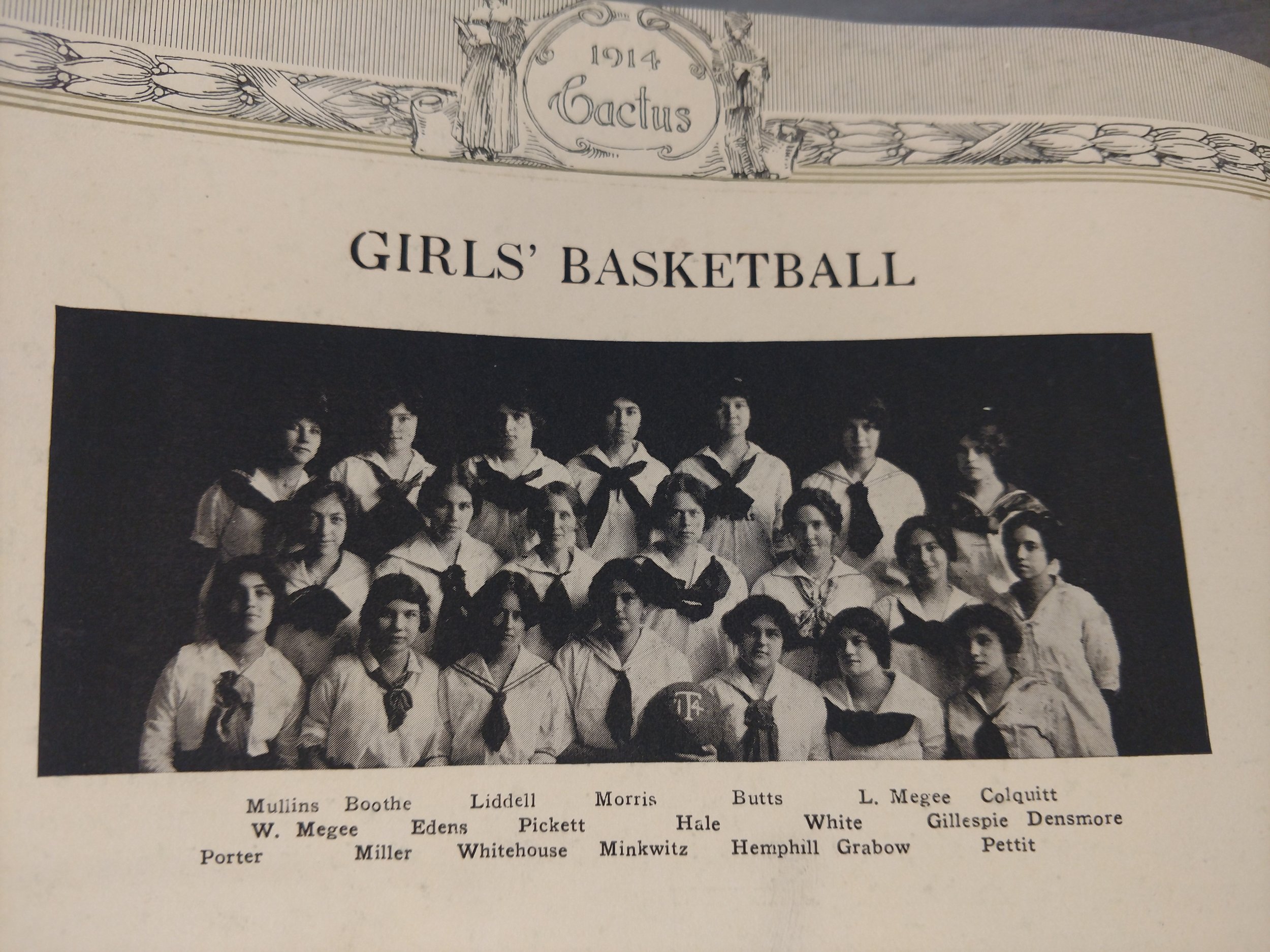
1912
Basketball 1912
1914- North Hall for Women's athletics
N. Hall known as the "shack" was acquired for women's athletics. Here is where the UT women's basketball players practice and play for over 15 years. Staying true to the ideals of the time, N Hall has little standing room for spectators- particularly men.
In the early 20th century there was a reform in women's active wear. " The impractical clothing that modesty required impeded andy kind of physical activity. In the case of swimsuits, the impracticality was also dangerous." " The weight of the wet swimsuit posed real dangers of drowning." Quote is from a picture hanging in the LBJ Library titled " Dress Reform and Sports".
1916 Longhorn women challenging the status quo.
Until 1916 It was considered “unladylike” for coeds to get too rowdy so they only watched the football rallies. Yell leaders directed the group (sorry, ladies – men only!) in cheers. “Texas Fight!” and “Go, Horns, Go!” were not among them. Instead, one of the most popular was the Rattle-de-Thrat Yell. The program included rousing speeches by the head coach and team captains, UT president, and several deans. Students performed skits that often poked a little fun at the faculty.
But in 1916 the “unladylike” tradition started to change. Coeds were catching the football fever. A 100 or so girls were bold enough to participate in the halftime snake dance at one of the games.
Thru the mid-1920s women were expected to dress fashionably and only allowed to clap, sing, and wave pennants. Yell leaders led only men in cheers. Any women caught "yelling" brought swift condemnation from the Dean of Women. Except for one day in 1916
One day in 1916
1918
1918 tennis
1920 Longhorn Sports
"The suffrage movement and passage of the 19th amendment in 1920 renewed the emphasis on women's freedoms resulting in modest gains for women in sports. The onset of the Great Depression in 1929 negated most of those gains. Millions of Americans were unemployed, and there was a push to keep women at home and out of the workforce. Not until WWII would women again enter the public sphere in large numbers. " Quote is from a picture titled "Education and Athletics" found in the LBJ Library.
In 1919 and 1920 Anna Hiss supports the creation of the W.A.A. a student let Women's Athletic Association. Tessa Nichols states in her thesis that "the promotion of student involvement in the governing bodies of women's collegiate sport was one of Hiss's strongest and most commonly overlooked convictions."




